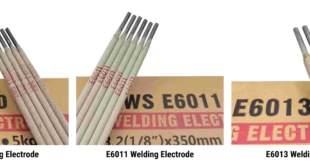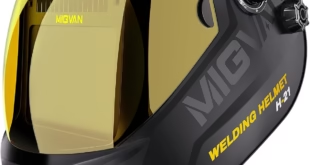The Ultimate Guide to Welding Torches
Introduction
Welding torches are essential tools for welders, as they are used to melt and join metal together during the welding process. There are several types of welding torches available, each with its own unique features and capabilities. In this article, we will explore the different types of welding torches, as well as the features to consider when selecting a welding torch and the importance of properly maintaining and caring for your torch.
Types of Welding Torches
There are several types of welding torches available, each with its own unique features and capabilities.

MIG Torch
MIG (Metal Inert Gas) torches are commonly used for welding mild steel, aluminum, and stainless steel. They use a continuous wire feed and a shielding gas to protect the weld from contamination. MIG torches are known for their speed and ease of use, making them a popular choice for both professional welders and hobbyists.
MIG torches use a continuous wire feed and a shielding gas to melt and join metal together during the welding process. MIG torches are commonly used for welding mild steel, aluminum, and stainless steel. One advantage of MIG torches is that they are relatively easy to use and can produce high-quality welds quickly. They are also suitable for a wide range of applications, including automotive repairs, structural steel fabrication, and manufacturing. However, MIG torches also have some limitations. For example, they are not well-suited for welding thin materials or intricate welds, as the continuous wire feed can be difficult to control. MIG torches also require a shielding gas, which can be expensive and can produce waste.
Overall, MIG torches are a good choice for welders who need to produce high-quality welds quickly and efficiently, particularly for thicker materials. They are also a good choice for welders who are new to the trade, as they are relatively easy to use.
TIG Torch
TIG (Tungsten Inert Gas) torches are used for welding a wide range of metals, including aluminum, stainless steel, and copper. They use a non-consumable tungsten electrode to create an arc and a shielding gas to protect the weld from contamination. TIG torches are known for their precision and versatility, making them a popular choice for welding thin materials and intricate welds.
TIG torches, use a non-consumable tungsten electrode to create an arc and a shielding gas to protect the weld from contamination. TIG torches are used for welding a wide range of metals, including aluminum, stainless steel, and copper. One advantage of TIG torches is that they are highly precise and versatile, making them suitable for a wide range of applications. They are particularly well-suited for welding thin materials and intricate welds, as the non-consumable electrode allows for greater control over the weld puddle. TIG torches are also capable of producing high-quality welds with a clean, aesthetic appearance. However, TIG torches also have some limitations. They are generally slower than other welding processes, such as MIG welding, which can be a disadvantage for large-scale production work. TIG torches also require a shielding gas, which can be expensive and can produce waste.
Overall, TIG torches are a good choice for welders who need to produce high-quality, precise welds, particularly for thin materials and intricate welds. They are also a good choice for welders who value aesthetics and the appearance of the finished weld.
Plasma Torch
Plasma torches are used for cutting and welding a wide range of metals, including mild steel, aluminum, and stainless steel. They use a high-velocity stream of ionized gas to create an arc and cut through metal. Plasma torches are known for their speed and accuracy, making them a popular choice for cutting and welding thick materials.
Plasma torches are used for cutting and welding a wide range of metals, including mild steel, aluminum, and stainless steel. They use a high-velocity stream of ionized gas, known as plasma, to create an arc and cut through metal. One advantage of plasma torches is that they are highly efficient and accurate, making them suitable for a wide range of applications. They are particularly well-suited for cutting and welding thick materials, as the plasma stream is able to easily penetrate and cut through the metal. Plasma torches are also relatively fast, making them a good choice for high-production work. However, plasma torches also have some limitations. They require a high level of skill and expertise to operate, as the plasma stream can be difficult to control. Plasma torches also require specialized equipment, such as a plasma cutter or plasma welder, which can be expensive.
Overall, plasma torches are a good choice for welders who need to cut or weld thick materials quickly and accurately. They are also a good choice for welders who have advanced skills and expertise in the field.
Features to Consider when Selecting a Welding Torch
When selecting a welding torch, there are several important features to consider.
Comfort and ergonomics
Welding torches can be used for long periods of time, so it’s important to choose a torch that is comfortable to hold and use. Look for features such as an ergonomic handle and a lightweight design to reduce fatigue.
Size and weight
The size and weight of the welding torch should be appropriate for the tasks you will be performing. A larger, heavier torch may be more suitable for heavy-duty welding, while a smaller, lighter torch may be better for more precise work.
Durability and reliability
Welding torches are subjected to high temperatures and wear and tear, so it’s important to choose a torch that is built to last. Look for torches that are made from high-quality materials and have a reputation for durability and reliability.
Cost
The cost of a welding torch can vary widely, so it’s important to consider your budget when selecting a torch. While it may be tempting to choose the cheapest option, keep in mind that a higher-quality torch may be more cost-effective in the long run due to its durability and reliability.
Selecting the Right Welding Torch
When selecting a welding torch, there are several important factors to consider to ensure that you choose the right torch for your needs.
- Type of welding: The type of welding you will be doing will largely determine the type of welding torch you need. MIG torches are suitable for welding mild steel, aluminum, and stainless steel, while TIG torches are suitable for a wide range of metals, including aluminum, stainless steel, and copper. Plasma torches are suitable for cutting and welding a wide range of metals.
- Material thickness: The thickness of the material you will be welding will also influence your choice of welding torch. MIG torches are generally suitable for welding thicker materials, while TIG torches are better suited for thin materials. Plasma torches are suitable for cutting and welding thick materials.
- Welding precision: If precision is a top priority, you may want to choose a TIG torch, which allows for greater control over the weld puddle. MIG torches are generally faster, but may not be as precise as TIG torches.
- Ease of use: If you are new to welding, you may want to choose a MIG torch, which is generally easier to use than TIG or plasma torches. However, keep in mind that all welding torches require a certain level of skill and expertise to operate safely and effectively.
- Cost: The cost of the welding torch should also be a factor in your decision. MIG torches tend to be less expensive than TIG torches, while plasma torches are typically the most expensive.
When choosing a welding torch, it’s important to consider your specific needs and goals, as well as your budget. Make sure to do your research and compare different torches to find the one that is best suited for your needs.
Maintenance and Care of Welding Torches
Proper maintenance and care of your welding torch is essential to ensure its longevity and performance.
Cleaning and replacing consumables
It’s important to regularly clean your welding torch to remove any dirt or debris that may accumulate during use. This can help to prevent issues such as clogged nozzles or electrodes, which can affect the performance of the torch. To clean your welding torch, you can use a wire brush or a piece of cloth to gently scrub the surface of the torch. Be sure to also replace any consumable parts, such as nozzles and electrodes, when they wear out or become damaged.
Storing and handling the torch properly
Proper storage and handling of your welding torch is essential to prevent damage and ensure its longevity. Make sure to store the torch in a cool, dry place, away from direct sunlight or heat sources. Avoid dropping or subjecting the torch to impact, as this can damage the internal components. When handling the torch, be sure to grip it firmly and use both hands to support the weight.
Regular inspections and repairs
Regular inspections and repairs of your welding torch can help to identify any issues and prevent them from becoming more serious. Make sure to periodically check the torch for signs of wear or damage, such as cracks or loose components. If you notice any issues, it’s important to address them as soon as possible to prevent further damage. This may involve replacing worn or damaged parts, or taking the torch to a professional for repairs.
FAQs
What are two popular types of welding torches?
Two popular types of welding torches are TIG (tungsten inert gas) and MIG (metal inert gas).
How far should you keep the torch from the material stick out?
The distance at which the torch should be kept from the material being welded depends on the type of welding being performed and the material being welded. It is generally recommended to keep the torch at a distance that allows for a stable arc.
Which is used in welding torches?
Gas is used in welding torches.
What are the four main parts of a welding torch?
The four main parts of a welding torch are the handle, the head, the gas lens, and the nozzle.
What PPE is required for using a torch?
Personal protective equipment (PPE) required for using a torch includes a welding helmet, gloves, and protective clothing.
What are the two types of cutting torches?
The two types of cutting torches are oxy-fuel and plasma cutting torches.
Conclusion
In conclusion, welding torches are essential tools for welders, as they are used to melt and join metal together during the welding process. There are several types of welding torches available, each with its own unique features and capabilities. When selecting a welding torch, it’s important to consider factors such as comfort and ergonomics, size and weight, durability and reliability, and cost. Proper maintenance and care of your welding torch is also essential to ensure its longevity and performance. By choosing the right welding torch for your needs and taking good care of it, you can ensure that your torch will provide reliable service for many years to come.
 Welding of Welders All about Welding and Welders
Welding of Welders All about Welding and Welders



